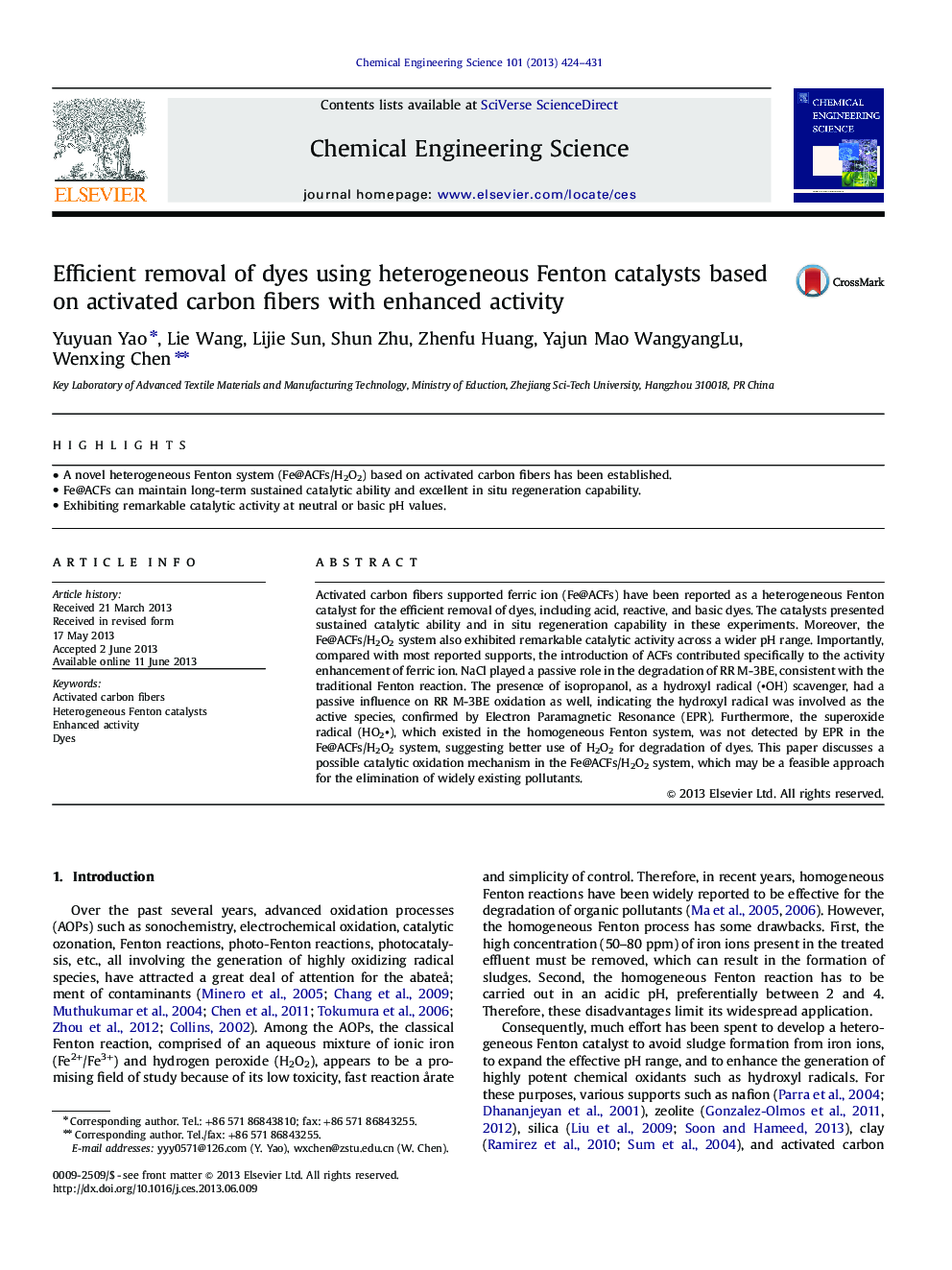| Article ID | Journal | Published Year | Pages | File Type |
|---|---|---|---|---|
| 6592005 | Chemical Engineering Science | 2013 | 8 Pages |
Abstract
Activated carbon fibers supported ferric ion (Fe@ACFs) have been reported as a heterogeneous Fenton catalyst for the efficient removal of dyes, including acid, reactive, and basic dyes. The catalysts presented sustained catalytic ability and in situ regeneration capability in these experiments. Moreover, the Fe@ACFs/H2O2 system also exhibited remarkable catalytic activity across a wider pH range. Importantly, compared with most reported supports, the introduction of ACFs contributed specifically to the activity enhancement of ferric ion. NaCl played a passive role in the degradation of RR M-3BE, consistent with the traditional Fenton reaction. The presence of isopropanol, as a hydroxyl radical (âOH) scavenger, had a passive influence on RR M-3BE oxidation as well, indicating the hydroxyl radical was involved as the active species, confirmed by Electron Paramagnetic Resonance (EPR). Furthermore, the superoxide radical (HO2â), which existed in the homogeneous Fenton system, was not detected by EPR in the Fe@ACFs/H2O2 system, suggesting better use of H2O2 for degradation of dyes. This paper discusses a possible catalytic oxidation mechanism in the Fe@ACFs/H2O2 system, which may be a feasible approach for the elimination of widely existing pollutants.
Related Topics
Physical Sciences and Engineering
Chemical Engineering
Chemical Engineering (General)
Authors
Yuyuan Yao, Lie Wang, Lijie Sun, Shun Zhu, Zhenfu Huang, Yajun Mao, Wangyang Lu, Wenxing Chen,
